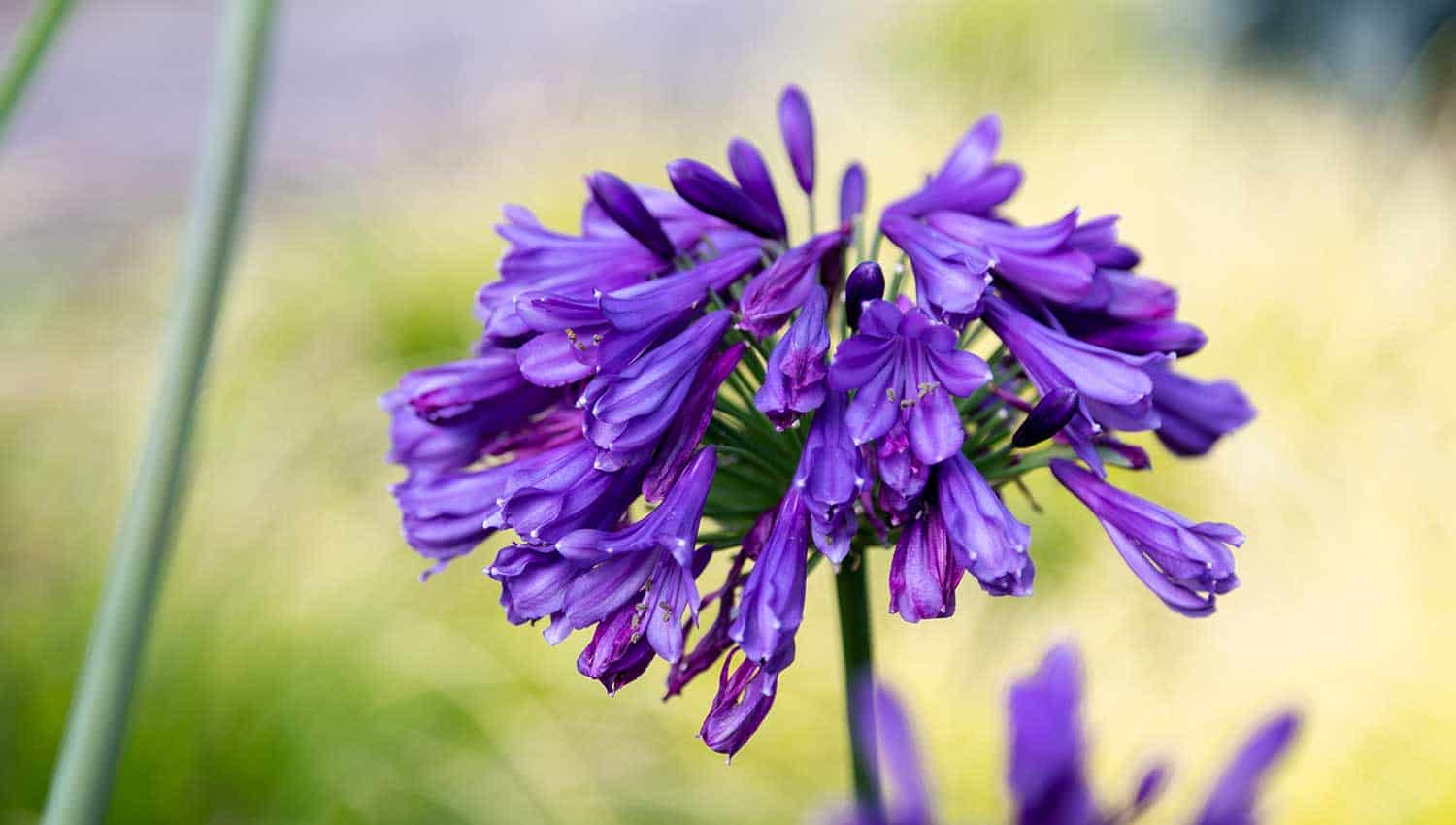Agapanthus Expanding Problems: Soil, Sunlight, and Watering
Agapanthus Expanding Problems: Soil, Sunlight, and Watering
Blog Article
Unleashing the Secret to Effective Agapanthus Cultivation: Idea for a Flourishing Garden
In the realm of horticulture, cultivating agapanthus successfully calls for a tactical strategy that includes numerous aspects of plant care. By understanding the subtleties of agapanthus cultivation, one can develop an environment where these plants prosper and grow perfectly.
Planting Agapanthus: Finest Practices
When growing Agapanthus, proper dirt prep work is vital for making certain successful development and growth of these stunning flowers. Agapanthus, frequently called Lily of the Nile or African lily, thrives in well-draining dirt with a somewhat acidic to neutral pH degree - Agapanthus. Before planting, it is essential to change heavy clay dirts with raw material such as garden compost or peat moss to boost water drainage and give essential nutrients for the plants
To grow Agapanthus, pick an area that gets complete sunshine to partial shade, as this will advertise healthy growth and bountiful flowering. Dig a hole twice the diameter of the plant's root round and position the Agapanthus at the very same deepness it was previously growing. Delicately backfill the opening with soil, pushing down firmly to remove any kind of air pockets around the origins.
Water the freshly grown Agapanthus completely and continue to keep the dirt equally damp, particularly during the plant's active expanding season. Agapanthus. Applying a balanced fertilizer once a month can further sustain the plant's growth and flowering. By adhering to these best practices for growing Agapanthus, you can produce a sensational screen of these captivating blossoms in your yard
Suitable Soil Conditions for Agapanthus
For optimum growth and growing success of Agapanthus plants, guaranteeing the soil conditions are suitable is important. Agapanthus favors soil that is abundant in nutrients, so incorporating a balanced plant food during the expanding season can advertise healthy and balanced growth and lively blooms.

Watering and Fertilizing Tips
To make certain healthy growth and vibrant blooms, correct watering and feeding techniques are essential for successful Agapanthus cultivation. Agapanthus plants profit from regular watering, especially throughout the expanding season.
When it pertains to feeding Agapanthus, a balanced fertilizer with equal components nitrogen, phosphorus, and potassium can be applied in the springtime to promote healthy growth and flowering. Slow-release plant foods are suitable for offering nutrients slowly over an extensive duration. Avoid over-fertilizing, as this can lead to too much foliage development at the expense of blooms.
Furthermore, including raw material like garden compost into the dirt can improve nutrient degrees and enhance soil framework, aiding in the general wellness of the Agapanthus plants. By following these watering and feeding tips, garden enthusiasts can ensure their Agapanthus plants flourish and generate stunning displays of blossoms.
Trimming and Deadheading Techniques
Proper pruning and deadheading strategies play an important function in keeping the health and appearances of Agapanthus plants, complementing the necessary practices of watering and feeding for effective cultivation. Pruning Agapanthus entails removing invested blossom heads, yellowing or dead fallen leaves, and overall shaping of the plant to promote much better growth. Deadheading, the process of browse around this web-site getting rid of discolored blossoms, not only boosts the plant's look yet additionally motivates more blooming.
When deadheading Agapanthus, it is a good idea to trim off the flower stem at the base using sharp, clean shears. This procedure reroutes the plant's energy from seed production back right into origin and foliage growth, advertising a much healthier and more robust plant. Routine deadheading can expand the growing duration of Agapanthus and prevent self-seeding, which can lead to overcrowding.
In terms of trimming, Agapanthus usually gain from a light trim after blossoming to clean up the plant and urge fresh development. Cutting back the spent blossom stems and getting rid of any kind of damaged or dead vegetation aids maintain the plant's vigor and overall appearance. Nevertheless, it is important to avoid cutting into the crown of the plant, as this can compromise its health and wellness.

Protecting Agapanthus From Pests and Diseases
Applying reliable insect and disease monitoring methods is important to protecting the wellness and vigor of Agapanthus plants in farming. One usual insect that affects Agapanthus is the Agapanthus borer, a caterpillar that tunnels into the plant, creating damage to the flowers and fallen leaves.
In addition to parasites, Agapanthus are susceptible to conditions such as root rot and fungal leaf areas. These concerns can frequently be prevented by making sure proper water drainage and preventing overwatering. Affected components of the plant should be immediately removed to stop further spread if indications of condition show up. Fungicides might his comment is here also be used as a treatment step, complying with the maker's guidelines carefully. By staying watchful and dealing with bug and illness concerns promptly, gardeners can aid their Agapanthus thrive and thrive.

Conclusion
To conclude, effective farming of agapanthus calls for correct growing strategies, excellent dirt problems, ample watering and feeding, normal pruning and deadheading, and defense from conditions and parasites. By adhering to these techniques and ideas, gardeners can ensure a flourishing garden filled up with beautiful agapanthus flowers. Agapanthus. Bear in mind to maintain constant care and attention to detail to advertise the health and wellness and long life of these magnificent plants
When planting Agapanthus, proper dirt preparation is crucial for ensuring effective growth and advancement of these attractive blossoms.Water the newly grown Agapanthus extensively and proceed why not try this out to keep the dirt uniformly moist, especially throughout the plant's active growing period.For ideal growth and blooming success of Agapanthus plants, ensuring the soil conditions are ideal is critical. When growing or transplanting Agapanthus, ensure the soil is well-prepared to offer the required foundation for the plants to develop themselves successfully. One usual insect that affects Agapanthus is the Agapanthus borer, a caterpillar that passages into the plant, triggering damages to the leaves and blossoms.
Report this page